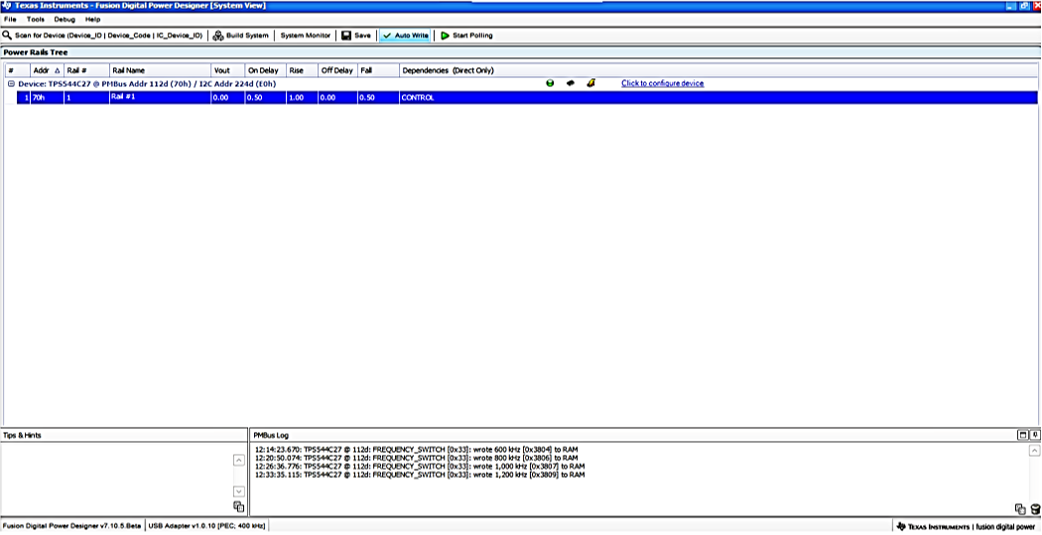SLUUCU5 June 2024 TPS544C27
- 1
- Description
- Get Started
- Features
- Applications
- 6
- 1Evaluation Module Overview
- 2Hardware
- 3Software
- 4Performance Data and Typical Characteristics Curves
- 5Hardware Design Files
- 6Trademarks
3.1 Opening the PMBus Fusion GUI
Open the PMBus GUI shortcut on the desktop directly as shown in Figure 4-1.
 Figure 3-1 PMBus GUI
Figure 3-1 PMBus GUIAfter opening the PMBus GUI , the specific PMBus address of TPS544C27 system view is shown in Figure 4-2. By default, the position of the shunt on the EVM jumper sets the TPS544C27 address to 0x70h. Click on "Click to configure device"
 Figure 3-2 PMBus GUI System View
Figure 3-2 PMBus GUI System View